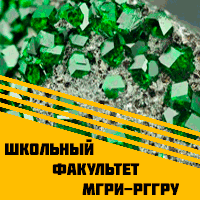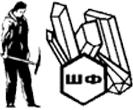Добрый день, Коллеги. Важное сообщение, просьба принять участие. Музей Ферсмана ищет помощь для реставрационных работ в помещении. Подробности по ссылке
Fundamentals of groundwater / Основы изучения подземных вод
After a 20-year hiatus, we are pleased to bring you the 2nd Edition of Fundamentals of Groundwater. Like its predecessor, the book is written at an introductory level to facilitate learning and teaching, while maintaining appropriate rigor. Not surprisingly, much has changed with this edition in terms of its look and feel and importantly the content. Most obvious is the use of color in many figures throughout the book. As the book progressed, the dearth in high-quality colored figures and photographs in traditional journal articles became obvious. Fortunately, here in the United States, groundwater-related documents and reports of the U.S. Geological Survey represent a valuable treasure of high-quality graphical material.
This text covers what we consider the basic areas of theory and practice in groundwater. The first half of the book is similar in coverage to the first edition with changes focused on updating methods and concepts. What is new is a “deep dive” into aquifers (Chapter 4) with a focus on large aquifers experiencing problems associated with overpumping. Chapter 5 focuses on basic groundwater flow theory and calculations. Chapter 6 introduces basic concepts in vadose or unsaturated zone. We have also updated and expanded Chapter 7 on geologic and hydrogeologic investigations with the addition of geophysical methods appropriate for larger-scale evaluations of aquifers, and novel approaches for the installation of piezometers. Chapter 8 covers regional groundwater flow and how groundwater systems interact with other components of the hydrologic cycle. We have maintained our comprehensive treatment of classical well hydraulics and common methods used to interpret results from aquifer tests. Chapter 9 is focused on confined aquifers that are homogeneous, isotropic, and infinite in extent. A new Excel spreadsheet curve fitting method is provided to show students a modern tool to solve aquifer testing problem. Chapter 10 looks at the response of leaky confined aquifers to pumping. Chapter 11 describes the response of an unconfined aquifer to pumping. Slug, step, and intermittent tests are treated in Chapter 12. Chapter 13 introduces how to deal with complex geological settings with analytical and numerical methods <...>




